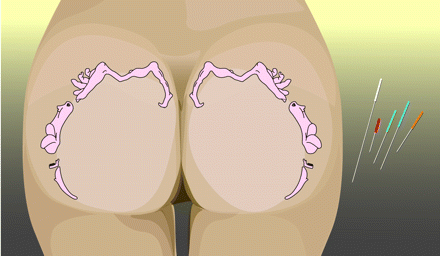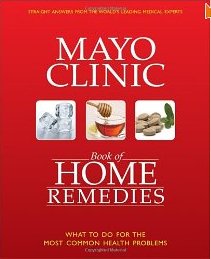March 10th, 2011 by Harriet Hall, M.D. in Opinion, Research
No Comments »

A new article in the Journal of Women’s Health by Westhoff, Jones, and Guiahi asks “Do New Guidelines and Technology Make the Routine Pelvic Examination Obsolete?”
The pelvic exam consists of two main components: The insertion of a speculum to visualize the cervix and the bimanual exam where the practitioner inserts two fingers into the vagina and puts the other hand on the abdomen to palpate the uterus and ovaries. The rationales for a pelvic exam in asymptomatic women boil down to these:
- Screening for chlamydia and gonorrhea
- Evaluation before prescribing hormonal contraceptives
- Screening for cervical cancer
- Early detection of ovarian cancer
None of these are supported by the evidence. Eliminating bimanual exams and limiting speculum exams in asymptomatic patients would reduce costs without reducing health benefits, allowing for better use of resources for services of proven benefit. Pelvic exams are necessary only for symptomatic patients and for follow-up of known abnormalities. Read more »
*This blog post was originally published at Science-Based Medicine*
February 8th, 2011 by Harriet Hall, M.D. in Better Health Network, Research
No Comments »

Ear infections used to be a devastating problem. In 1932, acute otitis media (AOM) and its suppurative complications accounted for 27 percent of all pediatric admissions to Bellevue Hospital. Since the introduction of antibiotics, it has become a much less serious problem. For decades it was taken for granted that all children with AOM should be given antibiotics, not only to treat the disease itself but to prevent complications like mastoiditis and meningitis.
In the 1980s, that consensus began to change. We realized that as many as 80 percent of uncomplicated ear infections resolve without treatment in three days. Many infections are caused by viruses that don’t respond to antibiotics. Overuse of antibiotics leads to the emergence of resistant strains of bacteria. Antibiotics cause side effects. A new strategy of watchful waiting was developed.
Current Medical Guidelines
In 2004, the American Academy of Pediatrics (AAP) and the American Academy of Family Physicians (AAFP) collaborated to issue evidence-based guidelines based on a review of the published evidence. Something was lost in the transmission: The guidelines have been over-simplified and misrepresented, so it’s useful to look at what they actually said. There were six parts:
1. Criteria were specified for accurate diagnosis.
- History of acute onset of signs and symptoms
- Presence of middle ear effusion (ear drum bulging, lack of mobility, air-fluid level)
- Signs and symptoms of middle ear inflammation: Either red ear drum or ear pain interfering with normal activity or sleep
They stressed that AOM must be distinguished from otitis media with effusion (OME). OME is more common, occurs with the common cold, can be a precursor or a consequence of AOM, and is not an indication for antibiotic treatment. Read more »
*This blog post was originally published at Science-Based Medicine*
December 16th, 2010 by Harriet Hall, M.D. in Better Health Network, Humor, Medical Art, Opinion, Research
No Comments »

In 1996, Alan Sokal got a bogus paper published in the journal Social Text. It was a parody full of meaningless statements in the jargon of postmodern philosophy and cultural studies. The editors couldn’t tell the difference between Sokal’s nonsense and the usual articles they publish.
Now a British professor of medical education, Dr. John McLachlan, has perpetrated a similar hoax on supporters of so-called “integrative” medicine. He reports his prank in an article in the British Medical Journal (BMJ).

After receiving an invitation to submit papers to an International Conference on Integrative Medicine, he invented a ridiculous story about a new form of reflexology and acupuncture with points represented by a homunculus map on the buttocks. He claimed to have done studies showing that
responses are stronger and of more therapeutic value than those of auricular or conventional reflexology. In some cases, the map can be used for diagnostic purposes.
The organizers asked him to submit an abstract. He did. In the abstract he said he would present only case histories, testimonies, and positive outcomes, since his methods did not lend themselves to randomized controlled trials; and he suggested that his “novel paradigm” might lead to automatic rejection by closed minds. Read more »
*This blog post was originally published at Science-Based Medicine*
October 21st, 2010 by Harriet Hall, M.D. in Better Health Network, Health Policy, Health Tips, News, Opinion, Research, True Stories
No Comments »

Dr. Novella has recently written about this year’s seasonal flu vaccine and Dr. Crislip has reviewed the evidence for flu vaccine efficacy. There’s one little wrinkle that they didn’t address — one that I’m more attuned to because I’m older than they are.
I got my Medicare card last summer, so I am now officially one of the “elderly.” A recent review by Goodwin et al. showed that the antibody response to flu vaccines is significantly lower in the elderly. They called for a more immunogenic vaccine formulation for that age group. My age group. One manufacturer has responded. Read more »
*This blog post was originally published at Science-Based Medicine*
October 7th, 2010 by Harriet Hall, M.D. in Better Health Network, Book Reviews, Health Tips, Opinion
No Comments »

 I write a lot of critical articles. It’s nice to be able to write a positive one for a change. I received a prepublication proof of The Mayo Clinic Book of Home Remedies: What to Do for the Most Common Health Problems. It is due to be released on October 26 and can be pre-ordered from Amazon.com. Since “quackademic” medicine is infiltrating our best institutions and organizations, I wasn’t sure I could trust even the prestigious Mayo Clinic. I was expecting some questionable recommendations for complementary and alternative medicine (CAM) treatments, but I found nothing in the book that I could seriously object to.
I write a lot of critical articles. It’s nice to be able to write a positive one for a change. I received a prepublication proof of The Mayo Clinic Book of Home Remedies: What to Do for the Most Common Health Problems. It is due to be released on October 26 and can be pre-ordered from Amazon.com. Since “quackademic” medicine is infiltrating our best institutions and organizations, I wasn’t sure I could trust even the prestigious Mayo Clinic. I was expecting some questionable recommendations for complementary and alternative medicine (CAM) treatments, but I found nothing in the book that I could seriously object to.
It is organized alphabetically, starting with acne and airplane ear and progressing through bedbugs, boils and bronchitis, dandruff, depression and diabetes to warts, wrinkles and wrist pain. Each entry consists of (1) a description of the problem and its symptoms, (2) treatments you can try at home, and (3) when to seek professional medical help. It concludes with a short section on emergency medicine that covers anaphylaxis, bleeding, burns, CPR, choking, fracture, heart attack, poisoning, seizure, shock and stroke.
Nowhere does it mention acupuncture, chiropractic, energy medicine, or homeopathy. It gives good, clear guidance about when a health problem should not be treated with home remedies. Its recommendations about diet and exercise are solid. It doesn’t recommend anything that can’t be supported by published studies and common sense. When it recommends herbal remedies and dietary supplements, it is cautious about what it claims. For instance, glucosamine and chondroitin are listed for osteoarthritis, but they point out that further study is required and they say “because the supplements may help and appear to be safe, it may not hurt to give them a try.” Not exactly a strong recommendation. Read more »
*This blog post was originally published at Science-Based Medicine*













